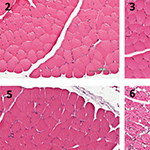Effects on duration of post-operative ischemia and patterns of blood flow recovery in different conditions of mouse hind limb ischemia
Main Article Content
Abstract
Background
Current limitations to the experimentation on patients with peripheral arterial disease push the development of different preclinical strategies. We investigated both duration of ischemia and blood flow recovery in mouse models of partial femoral artery ligation.Methods
Male BALB/c mice were used. The ligation over needle method involved placing a suture needle over the femoral artery, ligating over it and then removing the needle. The transfixation method involved transfixing the approximate center of the femoral artery and then tying the suture. Laser Doppler Perfusion Imaging was used to assess perfusion every 3 rdday until 42 days after the procedure.
Results
Ligation over needle method: Immediately post procedure, mean perfusion was -71.87% ± 4.43. Then mean difference in perfusion remained below the base line reading on days 3, 6, 9, and 12. From day 15 on wards mean perfusion progressively improved remaining near base line. Transfixation Method: Immediately post procedure mean perfusion was -70.82% ± 4.73. Mean perfusion improved following the procedure on days 3 and 6; a plateau followed this on days 9, 12 and 15. From day 15 onwards perfusion progressively improved remaining well below base line until crossing it on day 36.Conclusion
The currently described models do not pose major improvements over previously described methods.Article Details
How to Cite
AL-MUBARAK, Husain A et al.
Effects on duration of post-operative ischemia and patterns of blood flow recovery in different conditions of mouse hind limb ischemia.
Vascular Cell, [S.l.], v. 3, n. 1, p. 14, june 2011.
ISSN 2045-824X.
Available at: <https://vascularcell.com/index.php/vc/article/view/10.1186-2045-824X-3-14>. Date accessed: 02 jan. 2026.
doi: http://dx.doi.org/10.1186/2045-824X-3-14.
Section
Methodology and Protocols

